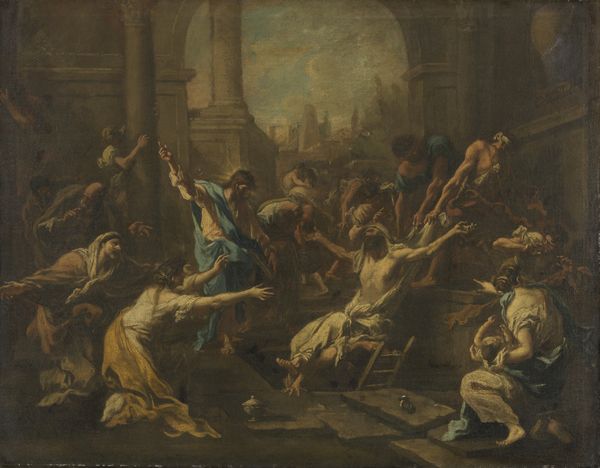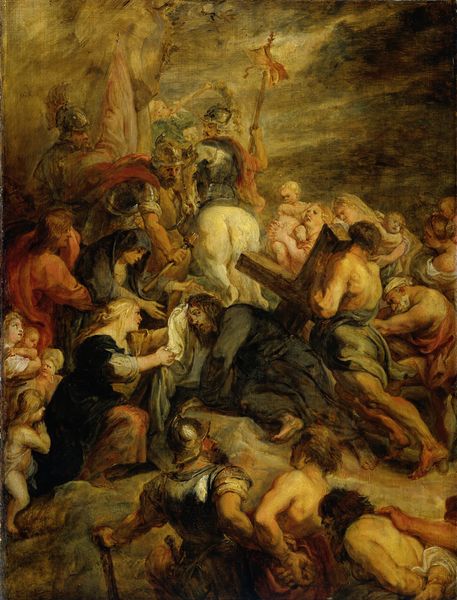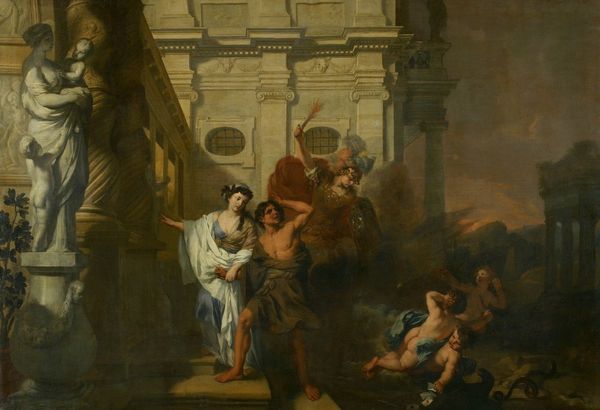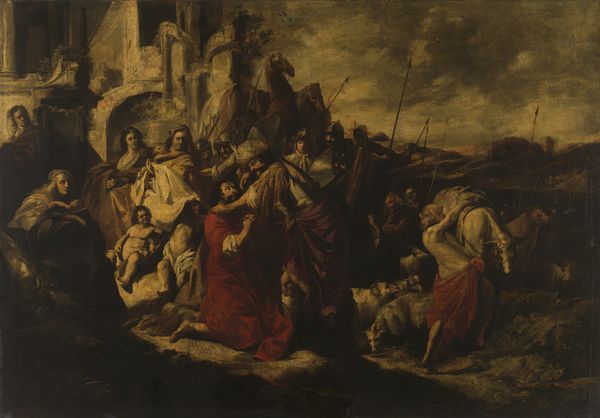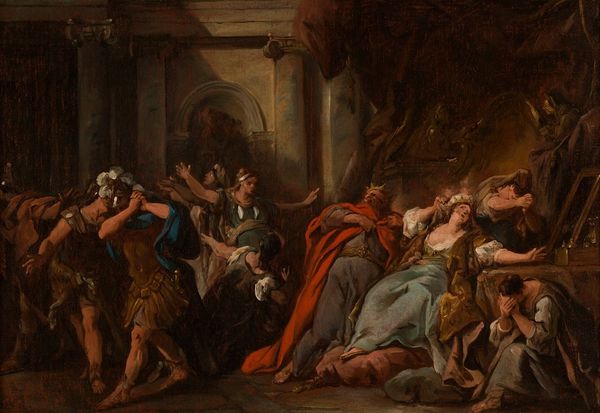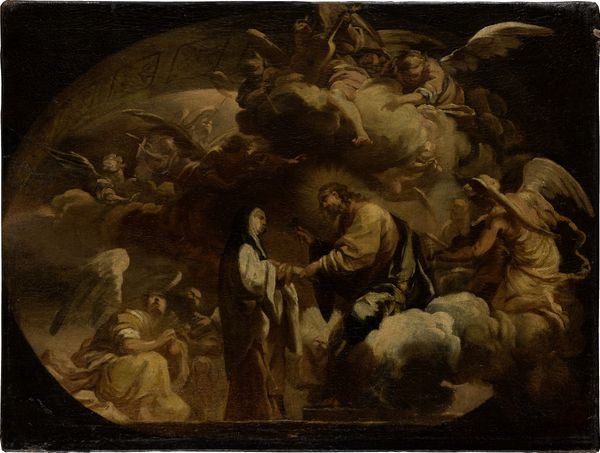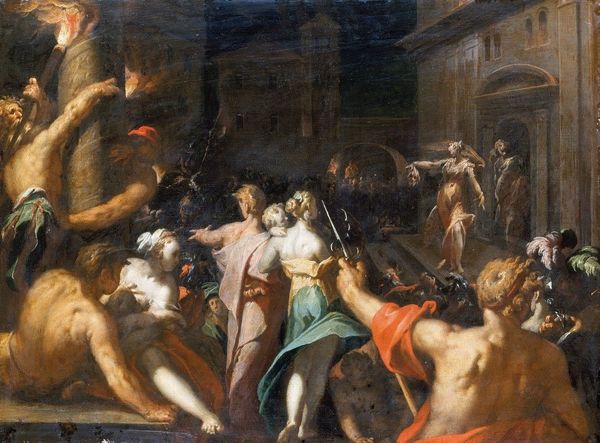
painting, oil-paint
#
narrative-art
#
baroque
#
painting
#
oil-paint
#
figuration
#
history-painting
Dimensions: 31 1/8 x 40 1/2 in. (79.1 x 102.9 cm)
Copyright: Public Domain
Curator: Here we have Leonaert Bramer’s "The Judgment of Solomon," dating from the 1640s and held at the Metropolitan Museum of Art. It's rendered in oil paint, quite in line with Baroque techniques. Editor: The immediate feeling is quite theatrical, isn't it? A stark contrast of light and shadow dramatizes the scene, drawing my eyes right to the foreground where that…almost frenzied action is taking place. Curator: Bramer certainly utilizes the tenebrism common in Baroque painting, but I’m interested in the material elements. Look at the brushstrokes; see how they convey the texture of fabric and flesh? It begs questions about the type of brushes he used, how he mixed his pigments. What about the linen upon which this scene unfolds? Editor: And what a scene it is, this depiction of the biblical story, Solomon's clever test. The staging, really, makes it about public spectacle. One sees Solomon high on his throne and a gathered crowd watches the judgement. What would an audience in the 1640s make of seeing themselves represented there, seeing authority depicted so… operatically? Curator: Interesting that you mention ‘operatically’ – given the size of the work, this wouldn’t be a history painting for the Church as the altar, but, possibly a narrative display meant for wealthy households with money to display art inside the home, which becomes its own type of propaganda. Think of how many pigments might have been needed, and their social value: for example, what might ‘purple’ indicate in 1640? Editor: That's precisely it! It's not simply biblical illustration but also a reflection on the ruling classes; the theater of power that reinforced social hierarchy, both then and possibly now in the institutional setting. The museum space creates a frame of legitimacy for this depiction of justice, this story that naturalizes those structures. Curator: A testament to Baroque art’s capacity, indeed, to marry spectacle and material culture with lasting power, so let’s take a few minutes and make space for others to reflect in the moment on how a wealthy court is implicated in the performance of authority that it takes to judge others. Editor: And how such images and the institutions that safeguard them continue to inform our own social narratives surrounding judgement.
Comments
No comments
Be the first to comment and join the conversation on the ultimate creative platform.
